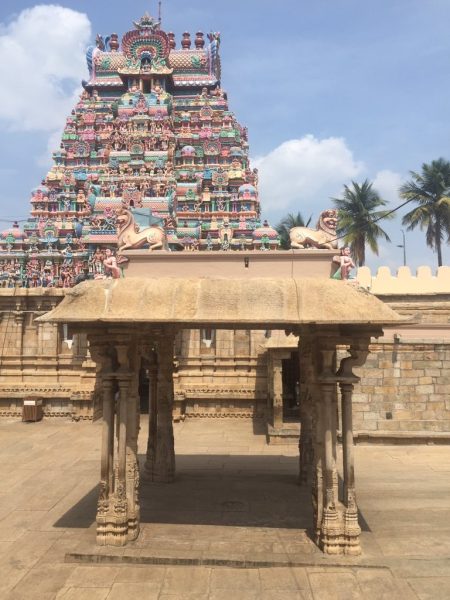
Kamban's Ramayanam holds sway over Valmiki's text in Southeast Asia
Kamban's work is filled with remarkable insights into the human condition, into divinity, and the relationship between the two. His Ravana is one of the great creations in all of literature, says Tamil scholar George Hart

Ramayana, one of India’s greatest epics, has many versions in various languages. While some remain the exact translation or reproduction of the original Sanskrit version of Valmiki, a few break this code.
Kamban’s (1180-1250 CE) Ramayanam (Iramavataram) is among the latter. His Tamil version treats the Indian civilisation of his time in a way that makes his work universal, much like Homer’s epics, Virgil’s Aeneid, or Shakespeare’s plays, according to George Hart, a widely respected scholar of both Tamil and Sanskrit, who has translated some of the best Tamil classics into English.
“This universality is its main appeal to all of Southeast Asia, where Ramayana is also one of the most popular stories of the region. It is Kamban’s version that has influenced the people in Southeast Asia more than the original text of Valmiki,” he said.
The Federal Premium: Why Sahitya Akademi to a celebrity editor sparked a literary row in Tamil Nadu
Kamban’s Ramayanam contains 10,534 poems. It has all the episodes of the Valmiki version except ‘Uttarakanda’.

“Unlike in the Ramayana of Valmiki, Rama is divine, an incarnation of Tirumal (Vishnu), who is ultimately God, as the invocation suggests when it comes to the version of Kamban. However, it is interesting to note that in some places, Rama seems fully human, while in others he is portrayed as fully divine,” said Hart while speaking on ‘Kamban: One of the world’s great poets’, at a webinar organised by the Centre for Singapore Tamil Culture and the National Library Board recently.
Human emotions and failings
Hart said Kamban’s great work spans all the human emotions, describing people who have human failings, often to a tragic extent. “It has expanses of wonderful description and dramatic episodes where the characters speak as if they were in a play. The work is filled with remarkable insights into the human condition, into divinity, and the relationship between the two. Kamban’s Ravana is one of the greatest creations in all of literature,” he said.
Hart is an emeritus professor at the University of California, Berkeley, where he was formerly the chair of Tamil studies at the department of south and south-east Asian studies. He has written extensively on pre-modern Tamil, its relationship to classical Sanskrit, and South Indian religion and culture.
In the 1970s, Hart founded the Tamil department at UC-Berkeley. He is also the author of The relation between Tamil and classic Sanskrit literature.
Also read: Stark feminist themes of Ambai’s Sahitya Akademi winning work
Hart was the first to translate Purananuru, the 400-poem text of the Sangam Age, as well as The Forest Book of the Ramayana of Kamban. He played a major role in getting Tamil recognised as one of the classical languages of the world. In 2015, he was awarded the Padma Shri for his contributions to the study and translation of Indian literature.
Asked why he considers Kamban as one of the world’s greatest poets, Hart said the literary wealth in the Tamil language is immeasurable. “One of the greatest Tamil epics is Kamban’s Ramayanam. One of the greatest Tamil poets is Kamban, who is not just a great Tamil poet, but one of the world’s greatest poets,” he replied. However, Hart didn’t make a comparison between Valmiki and Kamban.
Apples and oranges
“A comparison is absurd and it’s like comparing an apple with an orange. Both are different in their own styles and approaches. Valmiki is basically telling a story. Kamban takes it to another level, connecting the story with a sense of reality. I don’t think Kamban is as concerned with making Rama and Sita objects of integrity. Kamban’s Rama is simply beyond human understanding, unlike Valmiki’s Rama, who is an embodiment of goodness,” he said.
The translation of Kamban’s Ramayanam from Tamil into English was a challenge. “The biggest challenge was first of all to bring the rhythm into English. I have a book of Kalidasa’s Raghuvamsa translated from Sanskrit into Tamil. The translator gives the Tamil version of all Sanskrit words. The reason is that Sanskrit comes into Tamil easily. But, it is hard to retain the flow in English. So, preserving the flow was the most difficult part while bringing the Tamil version of Kamban into English,” he said. Hart, however, gives the credit to his co-author and poet Hank Heifetz.
“It was Hank who did most of the work. It was interesting. He knew Tamil and Sanskrit. I helped him with the meaning of Tamil words. He would recite the verses, and he got the rhythm right,” said Hart.
Poems and rhymes
In Kamban’s Ramayanam, each poem contains a beginning rhyme. This, according to Hart, is a feature of Tamil poetry, but is also found in other southern languages and has been taken into some Sanskrit works such as the Gita Govinda.
Also read: Ramanujan’s enchanting journeys in the maze of ‘continued fraction’
“The meter changes to reflect the content. The poems are all quite complex, adhering faithfully to the difficult rules of Tamil poetry,” he added. To prove his point, he recited a portion from the The Forest Book of the Ramayana of Kamban that he has translated with Heifetz.
“There are no enemies for you and there are no friends,/neither light nor darkness, no up and no down,/not youth or old age, no beginning or middle/or end, no before and no after, O God!/ If I have described you as you are and have always been/ while you come now with your bow, troubling your beautiful feet./If you were not to protect us, what blame could cling to you/ or what recompense for your favour, dark sleeper on the ocean of milk!”
Hart said Kamban’s portrayal was so evocative that he took the reader back 2,000 years. “He would transport the reader to the village scenes more than 2,000 years ago. You feel that you are absolutely there. You will witness exactly how the villagers lived 2,000 years ago. That was the speciality of Kamban. This you don’t see in the works of Sanskrit,” pointed out Hart.

